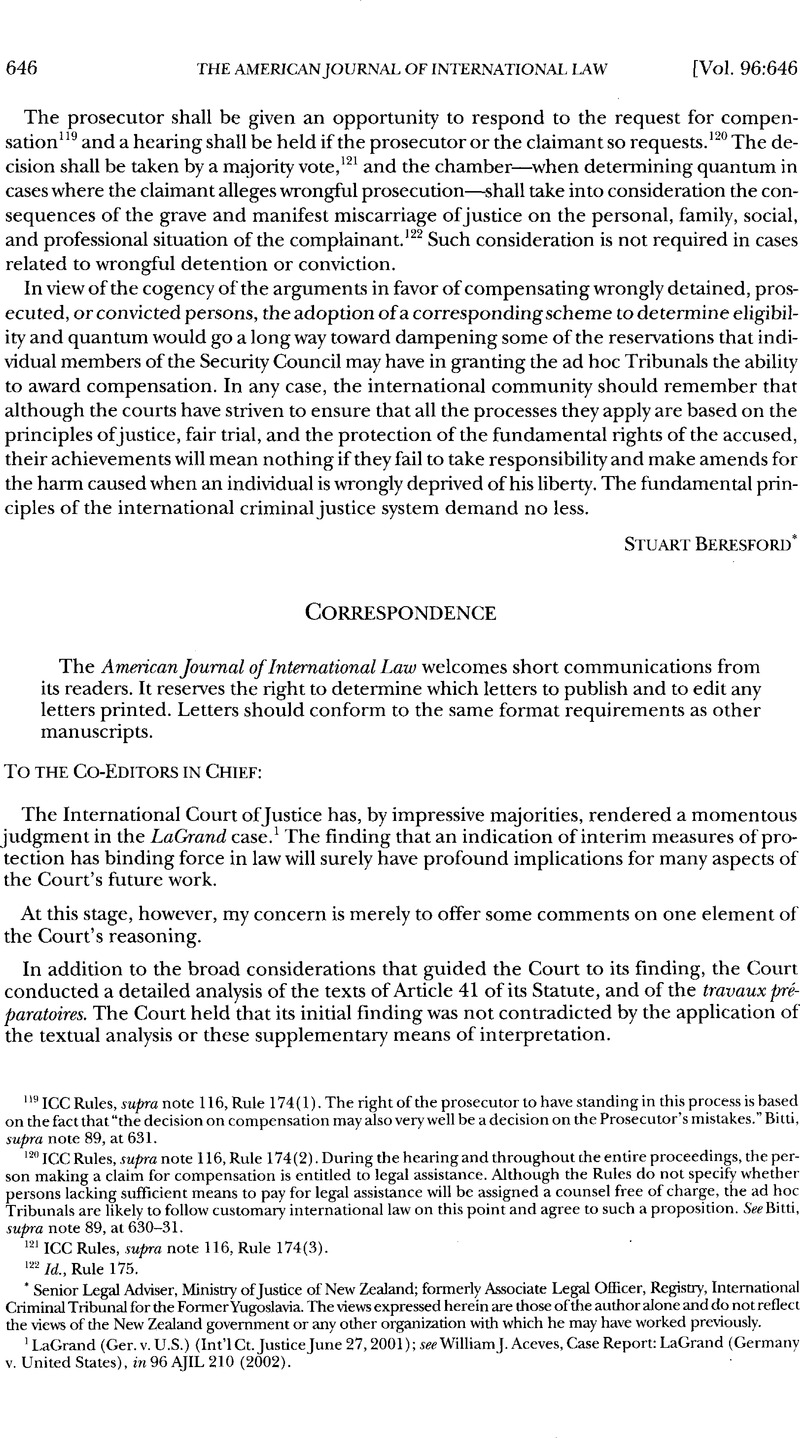No CrossRef data available.
Article contents
Correspondence
Published online by Cambridge University Press: 27 February 2017
Abstract

- Type
- Notes and Comments
- Information
- Copyright
- Copyright © American Society of International Law 2002
References
1 LaGrand (Ger. v. U.S.) (Int’l Ct. Justice June 27, 2001); see William, J. Aceves, Case Report: LaGrand (Germany v. United States), in 96 AJIL 210 (2002)Google Scholar.
2 In Manleyo, Hudson, aThe Permanent Court of International Justice 1920-1942, at 649 (1943)Google Scholar, Judge Hudson quotes the following texts from Mavrommatis Palestine Concessions (Greece v. Gr. Brit.).Jurisdiction, 1924 P.C.I.J. (ser. A) No. 2, at 19:
The Court is of opinion that, where two versions possessing equal authority exist one of which appears to have a wider bearing than the other, it is bound to adopt the more limited interpretation which can be made to harmonise with both versions and which, as far as it goes, is doubtless in accordance with the common intention of the Parties.
In the authoritative French text:
La Cour estime que, placée en présence de deux textes investis d’une autorité égale, mais dont l’un parait avoir une portée plus étendue que l’autre, elle a le devoir d’adopter l’interprétation restreinte qui peut se concilier avec les deux textes et qui, dans cette mesure, correspond sans doute à la commune intention des Parties.




